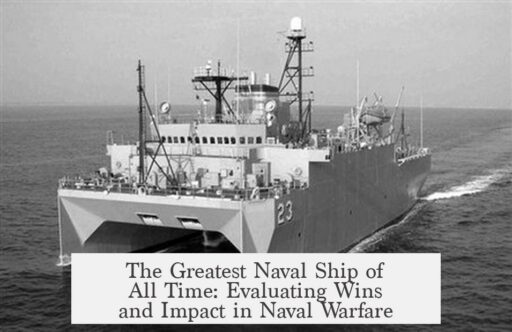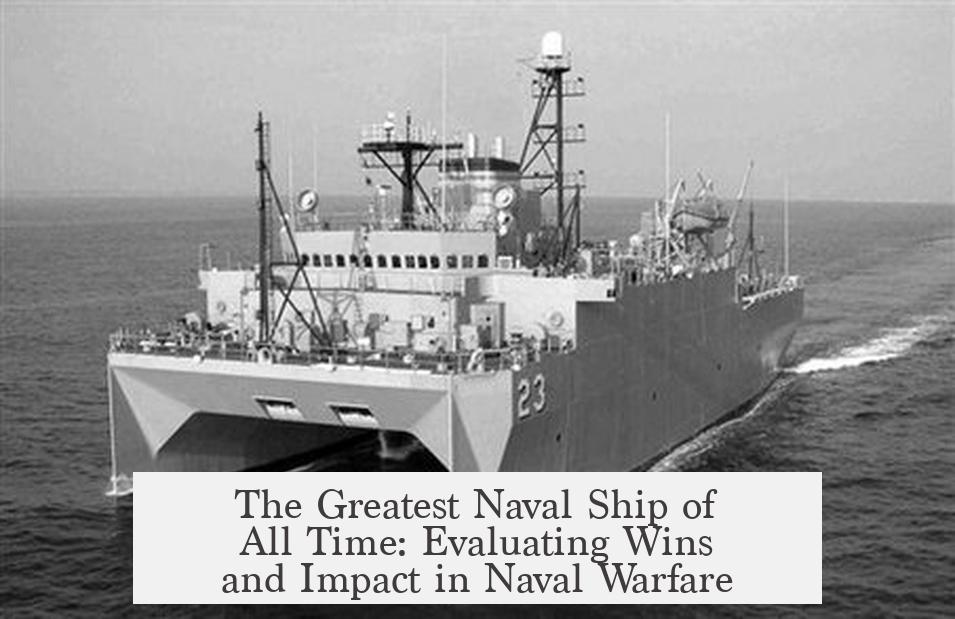Determining the greatest naval ship of all time, based on wins, requires defining what constitutes success in naval warfare. The term “naval ship” generally refers to vessels that serve in an organized government’s navy. Success, however, hinges on various factors, including the number of enemy ships sunk or damaged, strategic impact, survivability, and mission diversity. Ships that caused significant enemy losses, disrupted logistics, or influenced major battles stand out.
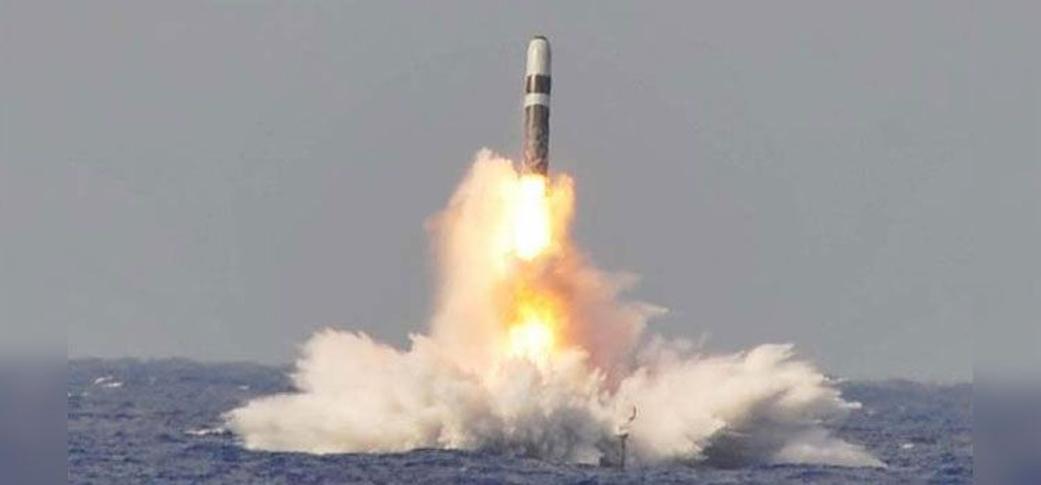
Several ships excel when analyzing wins and impact across different naval eras. Most powerful battleships like the HMS Hood or Yamato, although imposing, rarely engaged effectively or amassed impressive kill records. Instead, several smaller or more specialized ships show remarkable achievements.
The USS Enterprise (CV-6), a World War II aircraft carrier, ranks among the most successful naval ships. She is the most decorated warship of that conflict, credited with sinking 71 enemy ships and damaging 192 more. Her aircraft projections altered the outcomes of many Pacific battles. Although carriers rely on their air wings for offensive power, the USS Enterprise steered many pivotal victories, unlike traditional battleships that often saw limited action.
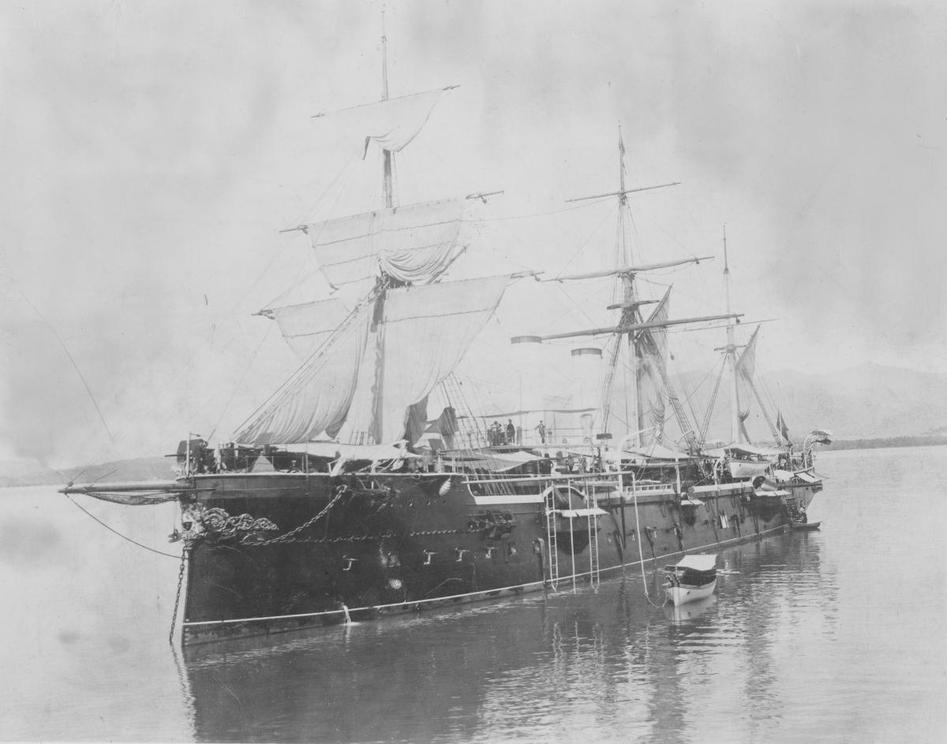
The German auxiliary cruiser Pinguin in World War II illustrates another type of naval success focused on commerce raiding. Pinguin sank or captured 28 enemy vessels totaling over 136,000 gross register tons, disrupting Allied merchant shipping effectively. Similarly, the World War I commerce raider SMS Emden destroyed two Entente warships and captured or sunk 17 ships, undermining Allied logistics.
Submarines, while technically not traditional naval ships but boats, massively influenced naval warfare. For instance, the German SM U-35 sank a staggering 224 ships during World War I, showcasing the lethal effectiveness of underwater warfare. Although subs operated differently from surface ships, their success rates are difficult to ignore in overall naval dominance.
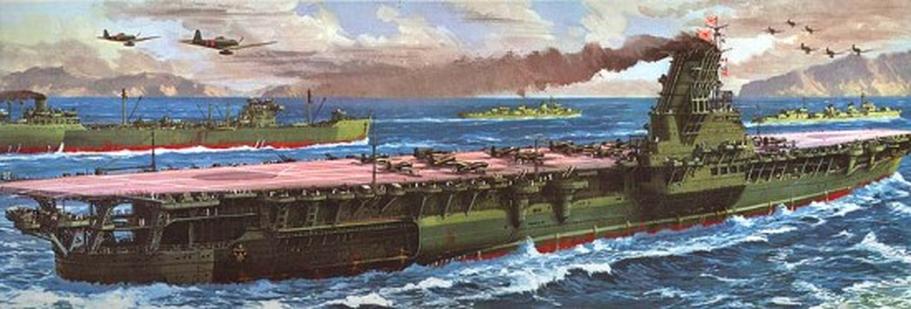
Surface warships with long combat histories deserve mention. The HMS Warspite served in both world wars and engaged multiple enemy targets, earning a reputation for resilience and firepower. She participated in major naval battles, supporting fleet actions with effective bombardments.
In earlier naval history, the HMS Victory is famed for its longevity and combat record, fighting across the American War of Independence, the French Revolutionary, and Napoleonic wars. While she fought numerous engagements, her victories were generally mixed fleet actions, not simply countable ship kills.

The USS Constitution
Specialized ships such as the British HMS Starling and American USS England showed remarkable anti-submarine success. HMS Starling sank or assisted in sinking 14 U-boats during World War II. USS England, in just 12 days, sank six Japanese submarines—a rapid and impactful performance.
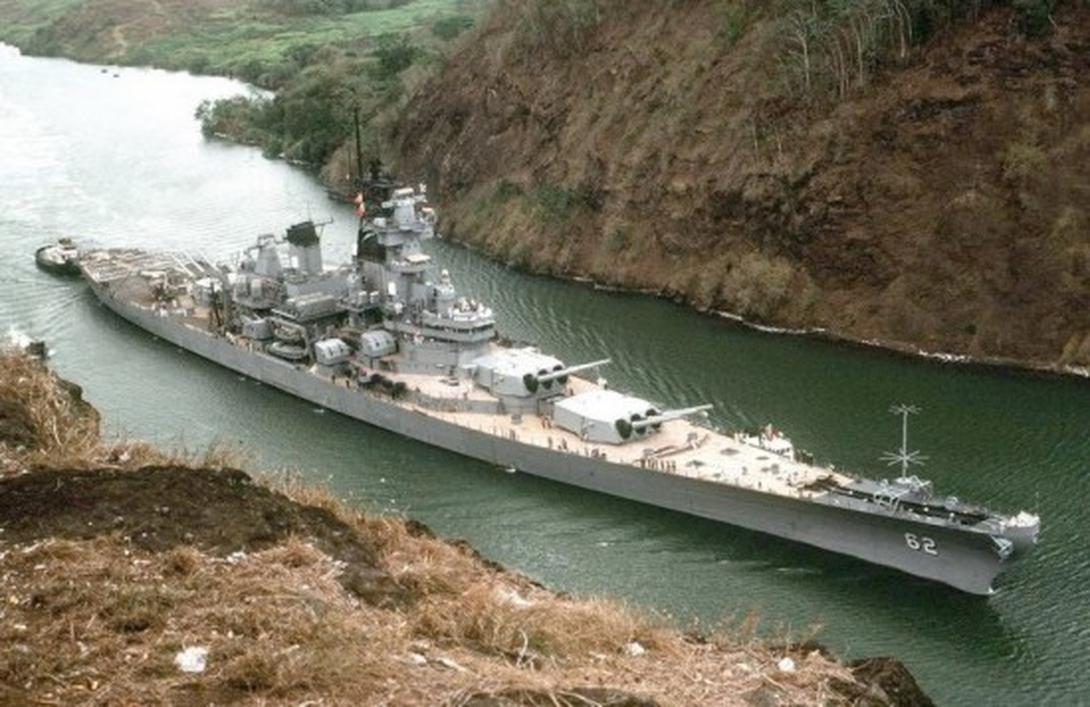
When evaluating the “greatest” by wins, it is critical to consider how naval engagements vary in nature. Battleships, despite their power, often engaged infrequently or ineffectively. For instance, the Queen Elizabeth-class battleships fought in World War I and II, but battleship-on-battleship kills rarely exceeded singular instances.
Aircraft carriers represent a shift in naval warfare paradigms. Their ability to project power over great distances without direct ship-to-ship combat revolutionized naval victories. This shift reduces direct measures of “wins” in terms of ship sinkings to more complex assessments including air strike effectiveness, fleet protection, and strategic influence.
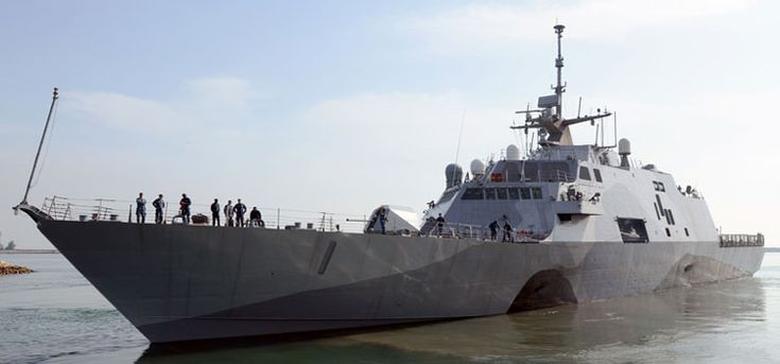
Historical examples also include niche but tough ships, like Korea’s turtle ships, which prevailed against overwhelming Japanese invasion forces during the Imjin War due to their design and tactical use. The Dutch cruiser De Zeven Provinciën showed almost invincible performance against British ships in multiple battles, despite not being the largest or most heavily armed vessel.
| Ship | Era | Type | Notable Achievements |
|---|---|---|---|
| USS Enterprise (CV-6) | World War II | Aircraft Carrier | 71 ships sunk, 192 damaged; most decorated U.S. warship in WW2 |
| SMS Emden | World War I | Commerce Raider | Destroyed two warships; sank/captured 17 ships totaling ~70,000 tons |
| Pinguin | World War II | Auxiliary Cruiser | Sank/captured 28 ships totaling ~136,000 gross tons |
| SM U-35 | World War I | Submarine | Sank 224 ships |
| HMS Victory | 18th-19th Centuries | Battleship | Fought in multiple wars over decades |
| USS England | World War II | Escort Destroyer | Sank six Japanese submarines in 12 days |
In summary, the greatest naval ship in terms of wins depends on the criteria used. The USS Enterprise (CV-6) often stands out for its broad impact and sheer number of enemy vessels neutralized during wartime. Commerce raiders like SMS Emden and Pinguin massively affected enemy logistics. Submarines such as SM U-35 surpassed any single surface ship in sinkings but operate differently. Battleships, while powerful, rarely achieved large kill counts or decisive wins alone.

- “Wins” vary: sinking ships, damaging enemies, or strategic impact matter differently.
- USS Enterprise (CV-6) sank 71 ships, the highest documented for a surface warship.
- Commerce raiders disrupted shipping with notable success but less direct fleet combat.
- Submarines outpace surface ships in sinkings but differ by operational methods.
- Battleships rarely dominated decisively in direct engagements.
- Aircraft carriers shifted naval warfare focus to air power rather than ship-to-ship kills.
- Historical ships like HMS Victory carry legacy but fewer quantifiable “wins.”
What Was the Greatest Naval Ship of All Time, in Terms of Wins?
If you’re looking for the “greatest naval ship” based purely on battle wins, the answer isn’t straightforward—because defining “greatest” and “wins” is tricky! However, when considering actual combat success and impact, the USS Enterprise (CV-6) stands out as arguably the winner in terms of sheer numbers of enemy ships sunk and damaged.
Let’s navigate the vast ocean of naval history. Some of the most powerful battleships, like the famous HMS Dreadnought or the King George V-class, are legendary in design and influence but were often pitiful in terms of actual sunk enemy tonnage. Others, such as commerce raiders and submarines, racked up impressive victory lists—but do they qualify as the “greatest naval ship” in the traditional sense? Let’s unpack it.
Defining the Greatest Naval Ship: What’s the Criteria?
First off, we want to clarify what counts as a “naval ship”? Are we talking about ships commissioned by established navies, or just maritime vessels that impacted warfare? And by “greatest,” do we mean a single vessel’s career, or a ship class design? And what precisely counts as a “win?” Is it surviving battles, sinking enemy vessels, or maybe something more nuanced like projecting power through bombardment or strategic influence?
All these questions matter. For example, does disabling an enemy fleet count as victory? What if a ship damaged dozens of enemy ships but never sank many? Does a warship that racked up kills in a short campaign but was lost early qualify as “greatest”? These considerations cloud the picture.
The Contenders: Ships With Impressive Combat Records
USS Enterprise (CV-6): The Most Decorated and Deadly
The USS Enterprise (CV-6) consistently gets the nod for greatest wins. This World War II aircraft carrier—a floating airfield on steroids—sank an incredible 71 ships outright and damaged 192 more. That’s not a typo. This carrier was a nightmare for the Japanese navy. Its aircraft launched deadly strikes across the Pacific, from the Battle of Midway to hundreds of raids that turned tides.
From a firepower and strike capability standpoint, carriers don’t engage in traditional gun battles, but their impact is unquestionable. That raises another point: the actual ship delivers wartime success through the planes it launches. Yet, no plane could take off or return without that mighty steel giant beneath it.
SMS Emden and Pinguin: Commerce Raiders Running the Seas
These German raiders during the World Wars focused on sinking merchant and supply ships. SMS Emden destroyed two Entente warships and sank or captured sixteen British and one Russian merchant ship, totalling 70,825 gross tons. Meanwhile, Pinguin sank or captured 28 ships equaling 136,642 gross register tons.
They were highly successful in disrupting supply lines, striking far from home waters. But their overall impact is less about battlefield wins and more about economic warfare. Still, their record of destruction was significant.
USS England and HMS Starling: Submarine Hunters Extraordinaire
Submarines are technically boats, but these destroyers played a crucial role sinking submarines. USS England sank 6 Japanese subs in a lightning-fast 12 days. HMS Starling is credited with 14 U-boat kills or assists. Their effectiveness saved countless Allied lives and freight—victories of survival and control rather than massive sinkings.
Historic Titans: HMS Victory and USS Constitution
Going further back, HMS Victory famously served in multiple wars including the American War of Independence and Napoleonic Wars. While she may not have sunk dozens of enemy ships, she was a symbol of resilience and tactical superiority.
USS Constitution took single-ship actions against British frigates and emerged victorious. These battles boosted morale and prestige, even if, in a broader strategic sense, their impact was limited.
Why Some “Most Powerful” Battleships Weren’t Effective Winners
Battleships like HMS Dreadnought revolutionized naval warfare design, inspiring an entire class called “dreadnoughts.” Their heavy armor and massive guns made them awe-inspiring. However, their battlefield performance often doesn’t match the hype. Many battleships of World War I and II saw limited engagements, and when they fought, they rarely sank more than one enemy ship per encounter—and often functioned in concert with other ships.
This dubious return on investment for the mammoth battleship led to shifting naval doctrines.
The Paradigm Shift: Why Aircraft Carriers and Submarines Changed the Game
The true game-changers didn’t necessarily rack huge kill counts through direct firing. Aircraft carriers projected power far beyond traditional line-of-sight naval battles. Meanwhile, submarines played sneaky, devastating roles. Their effectiveness isn’t measured only by the tonnage sunk but by changing how wars are fought.
That’s why USS Enterprise and subs like SM U-35, which sank 224 ships in WWI, matter—as does the Korean turtle ship, an early ironclad that dominated its time despite older technology.
So, Who Really Wins the Title of Greatest Naval Ship?
Putting it all together, the USS Enterprise (CV-6) ticks more boxes than others: longest service, number of kills, influence, and adaptability. It excelled in a modern battlefield where power projection counts the most.
Sure, SMS Emden and Pinguin’s commerce raids inflicted damage on supply lines, but didn’t control fleet battles. Battleships like HMS Dreadnought and Warspite had prestige but limited direct wins. Historic ships such as HMS Victory symbolized naval power across decades but without the kill count to match.
Practical Takeaways: What Can Today’s Naval Enthusiasts Learn?
- Understanding “Victory” is Complex: Winning at sea depends on tactics, strategy, and mission, not just sinking enemy ships.
- Power Projection Beats Raw Firepower: The aircraft carrier revolutionizes naval warfare—weapons aren’t just about size, but reach.
- Adaptability Matters: Ships like USS Enterprise commanded the seas by launching planes, showing a future-focused approach works better than sticking to old ways.
- Historical Legacy and Modern Performance Are Different Metrics: Fame and influence do not always line up with combat success.
Ever wonder how a ship built over 75 years ago could outshine thousands of other vessels? It’s partly because it adapted to new forms of warfare and excelled in its role.
Engage With This Thought
What if the “greatest” naval ship isn’t the one with the biggest guns or the thickest armor, but the one that best balances offense, defense, and strategic impact? Can ships of today learn from history and redefine what “wins” mean in maritime conflicts? Maybe the title of “greatest” evolves as battleships give way to drones and automated vessels.
Final Verdict
While many historic ships earned fame and respect, the USS Enterprise (CV-6) shines as the greatest naval ship of all time in terms of combat wins. It best combined all the elements of success in modern naval warfare: relentless offensive capability, strategic reach through air power, and a combat record unmatched by any battleship or cruiser.
Some of the most powerful battleships dazzled with heavy guns but seldom delivered decisive victories, showing that raw power alone doesn’t guarantee success at sea.
Admirals and historians alike recognize that the future of naval dominance belongs to the ships that can command from afar, strike hard, and adapt quickly. USS Enterprise proved exactly that—earning its place as the “victory” queen in naval history’s ranks.
What naval ship holds the record for the most enemy ships sunk during wartime?
The German WWI commerce raider SMS Emden sank or captured 17 ships totaling over 70,000 gross tons. But the USS Enterprise (CV-6), the most decorated US warship of WWII, sank 71 ships and damaged 192. Numbers depend on criteria used.
Were the most powerful battleships always the most effective in battle?
No. Some battleships like HMS Invincible were built for speed but saw combat in situations they were not suited for. Despite their power, they often suffered heavy losses or limited success in naval engagements.
How does one measure the success of a naval ship in terms of ‘wins’ or victories?
Success can mean sinking enemy ships, surviving battles, or dealing strategic blows like naval bombardments. Some ships may have many victories in single-ship duels, while others contributed in coordinated fleet actions.
Is a ship’s design or individual ship more important when judging effectiveness?
Both matter. Designs like HMS Dreadnought revolutionized naval warfare. But some individual ships, such as HMS Warspite or USS Enterprise, had exceptional combat records that surpassed their design peers.
Can submarines be counted as the greatest naval ships based on their kill records?
Submarines like SM U-35 sank over 200 ships in WWI. However, since submarines are technically boats, they are often classified differently from surface warships when judging naval ship ‘greatness’.
